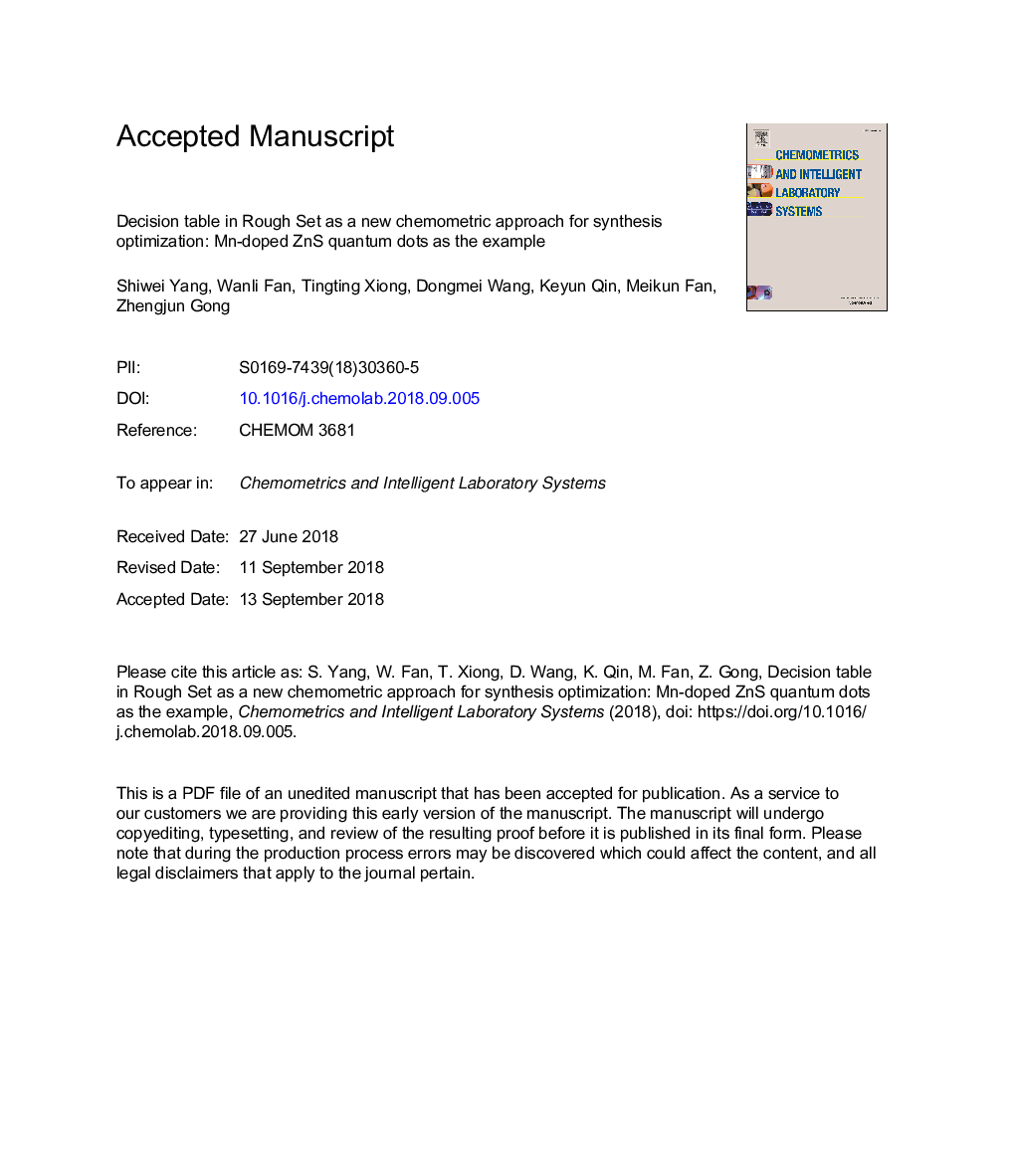| Article ID | Journal | Published Year | Pages | File Type |
|---|---|---|---|---|
| 11031272 | Chemometrics and Intelligent Laboratory Systems | 2018 | 26 Pages |
Abstract
Decision table (DT) in Rough Set was first proposed as a new chemometric approach for the optimization of synthesis strategy in this work. The fluorescence (FL) performance optimization of Mn-doped ZnS quantum dots was utilized as an example to illustrate the analysis procedure and verify the rationality of DT. Five condition attributes (namely synthesis conditions) were first reduced to be three through the analysis of FL intensity (decision attribute) and attribute reduction of the first DT. Two core attributes were confirmed: the volume ratio of ZnSO4 and Na2S solution, the volume of MnCl2 solution. It was then found that the latter was the most important condition attribute from attribute reduction of the second DT and the optimal synthesis strategy was obtained. The results were then verified by the use of single factor analysis and orthogonal experiment. Finally, it is concluded that the proposed method has the advantages of attribute reduction, core attribute determination and no requirement on evenly distributed conditions despite the need of certain mathematical knowledge. More importantly, it presents superiority for synthesis optimization when handling larger number of condition attributes due to attribute reduction. DT might be a new chemometric approach for the optimization of materials synthesis with multiple factors.
Keywords
Related Topics
Physical Sciences and Engineering
Chemistry
Analytical Chemistry
Authors
Shiwei Yang, Wanli Fan, Tingting Xiong, Dongmei Wang, Keyun Qin, Meikun Fan, Zhengjun Gong,
